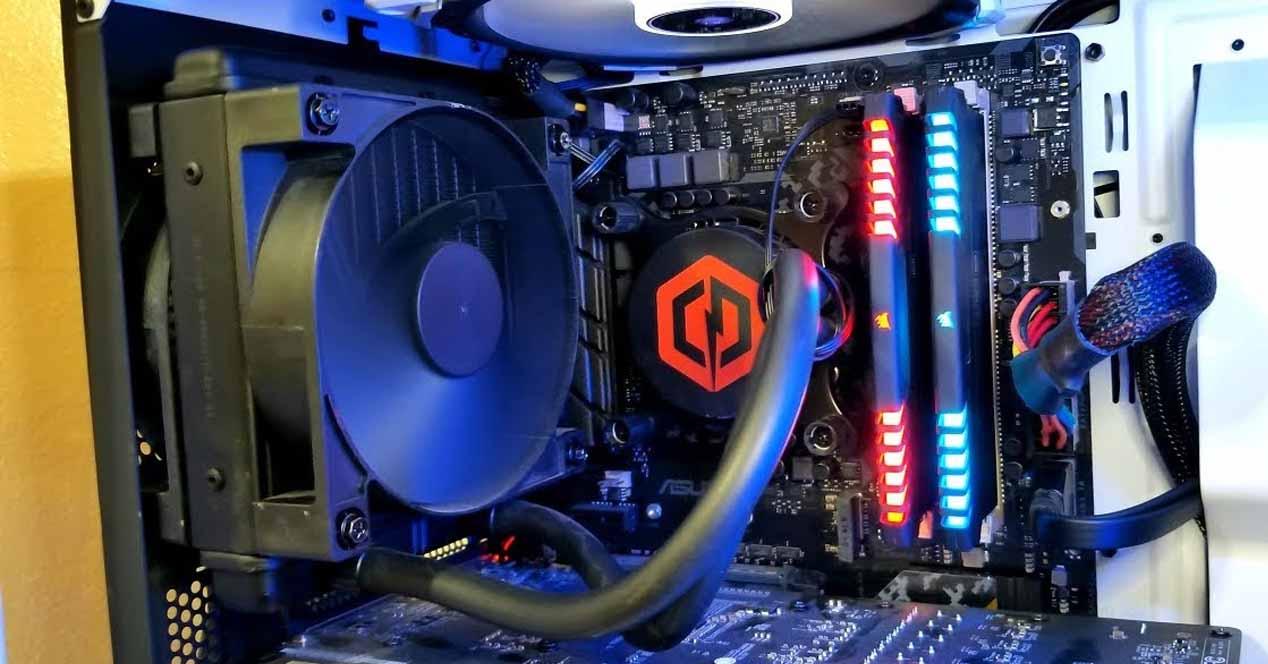You have surely said this sentence at least once this year: the weather is crazy. And you wouldn’t be wrong, because what we’re about to experience this summer may not have been seen in decades. After the cold spring came the cold came back and now we are going to touch 40 degrees in just 15 days so is it a good time to buy a All in one for our CPU or GPU facing the summer?
We are not exaggerating if we say that this summer promises to be difficult thermally speaking. For this reason, the air shafts are going to be insufficient and by far compared to the ambient temperatures above 40º on average in our country. The solution is to improve cooling and we are not talking about putting more or better fans on the PC, but rather major system changes.
AIO and summer liquid coolers, a real alternative?
Well, they really are. An AIO must begin to be valued as not a temporary option in itself because summer is approaching, but rather as a stationary option for our PC throughout the year or its useful life. The air shafts begin to have marginal improvements version after version, disruptive technology that changes and improves temperatures does not happen, therefore an AIO is the quick and easy solution to improve what is present, not so cheap.
Everything will depend on the hardware available, the use and the economy, of course, but once the option of an AIO has been valued, where is it most needed today? CPU or graphics card? Well, to discern that, there are as many cases as there are PCs in the world, so we have to make a series of decisions. solomonian.
AIO in a processor
It really has all the advantages and the disadvantages are really negligible, but let’s argue. An AIO for CPU is easy to install today, it does not require maintenance in the vast majority of cases and the temperature gain is interesting as soon as you start from a mid-range heatsink. The problems are clear: his price
The capillarity the materials used and the wear and tear of the pumps are the most controversial issues, firstly because air enters the circuit over the years, and secondly because this same air deteriorates the pump in its operation and its axis. We generally speak of 5 to 10 years, which will be when there is no guarantee on the other hand, but that is why we always insist on models of proven quality despite paying a little more.
AIO on a GPU
Everything gets complicated here, because what we have is precisely a disassembly of the graphics card which can and surely must lead to a loss of warranty, where to withdraw EVGA the rest of the manufacturers do not tolerate it.
For this reason we have to assume this risk, which is important if we take into account that an AIO system for GPU is much more complex to install than that for CPU, there are far fewer models available and the problems are the same as those specified in the upper section.
For this reason, the vast majority of users choose not to take the risks involved, that if they do, it is better to switch from AIO to custom liquid cooling, which would be ideal, but then the level of knowledge must be much higher and the price also skyrockets. Therefore, this type of product, like an AIO, is recommended for summer and in fact for the whole year, but knowing these risks, the choice is something personal.











